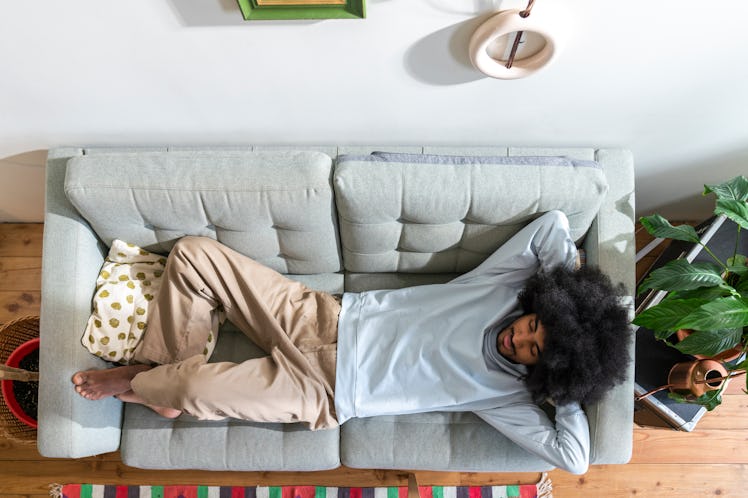This Exact Nap Structure Can Help Parents Survive An All-Nighter
Nothing will heal you more than a full night of uninterrupted sleep. But if you can’t get that, this specific way of napping might help, a new study finds.

Sleep-deprived parents, scientists have figured out the best way for you to survive those brutal all-nighters. It all boils down to taking naps. Okay, okay. That’s not exactly groundbreaking — of course, a good nap will help you deal with the fact that you can barely get a wink of sleep when your kid keeps you up all night with the stomach flu. But the research goes deeper, because scientists discovered the precise nap structure you should adopt to survive those nights where everything goes wrong and no shut-eye is to be had. And the answer lies with those who work the night shift.
Study author Sanae Oriyama, a nursing science professor at Hiroshima University’s Graduate School of Biomedical and Health Sciences in Japan, examined data collected in four previous studies that examined nurses' napping habits while working 16-hour overnight shifts. The studies examined fatigue levels after the participants took either a 120-minute nap ending at midnight, or a 90-minute nap ending at midnight followed by a 30-minute nap ending at 3 a.m., and those who did not nap at all. (It takes 90 minutes to complete a full sleep cycle.)
She found that those who only took one 120-minute nap — rather than two smaller naps — started to get drowsy by 4 a.m. and remained tired until the end of their shift at 9 a.m. Those who took a 90-minute nap and a later 30-minute nap did not begin to feel tired until closer to 6 a.m.
Oriyama hypothesizes that the 30-minute snooze ending at 3 a.m. helped the workers stave off fatigue and suggested adding an additional 30-minute nap between 5 a.m. and 6 a.m. to help them make it to the end of the shift.
“A 90-minute nap to maintain long-term performance and a 30-minute nap to maintain lower fatigue levels and fast reactions, as a strategic combination of naps, can be valuable for early morning work efficiency and safety,” she said in a press release.
Oriyama also found that neither split naps nor single naps helped improve cognitive function as fatigue increased. Additionally, fatigue increased when naps lasted longer than 90 minutes.
The study also found differences in exhaustion for those who took longer to fall asleep than those who were quick-to-REM. When participants took longer to fall asleep, they “showed poorer scores in the Uchida-Kraepelin test (UKT), a timed basic math exam meant to measure speed and accuracy in performing a task.” The research highlights the importance of being able to fall asleep quickly — so that you can get as much from those naps as possible. Consider our two guides on figuring out how to fall asleep — and stay asleep — as fast as possible on those nights when you’re really just trying to get any amount of sleep that you can in between cleaning out sick buckets or checking your kid’s temperature.
The research, though designed for overnight shift workers, could also be significant to new parents, said Oriyama. “The results of this study can be applied not only to night shift workers but also to minimize sleep deprivation fatigue in mothers raising infants,” she explained.
Admittedly, more research is necessary to determine if these results are repeatable across populations owing to the small sample size — 41 total participants, all of whom were Japanese women in their 20s.
So, what does this mean for the average sleep-deprived parent? The one who watched over their sick kid overnight or dealt with their first round of cluster feeding? Well, probably not that much, and not enough to make you feel better. You might not be alert enough to even remember this nap structure or the timing of the naps and you, yes, might just sleep when the baby sleeps or chalk it up to a wash and go to bed early A.F. later instead.
But if you are alert enough — and you have the opportunity to try to sleep in this exact structure, with one 90-minute nap that ends at midnight and a 30-minute nap that ends at 3 a.m. — you can at least carry the somewhat cold comfort that you’ve optimized whatever little sleep you were able to get. And don’t forget to check out our guide on how to get through the day, hour-by-hour, on no sleep. Godspeed.